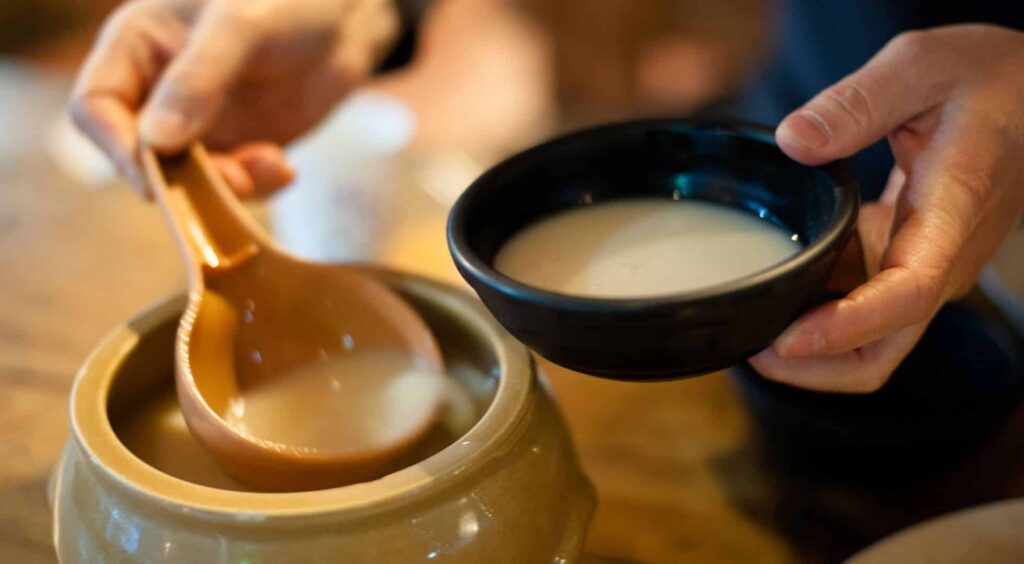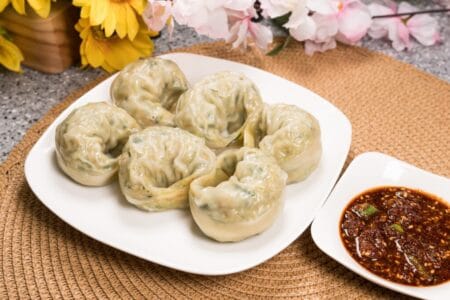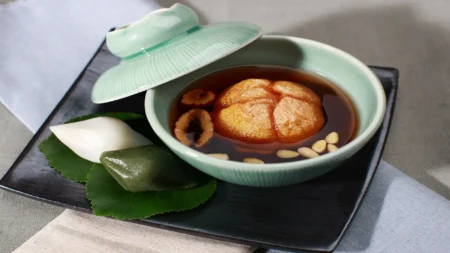From ancient farms to modern bars — why the world is falling in love with this milky, fizzy drink
Korea’s oldest alcoholic beverage is having its biggest moment yet. Makgeolli (막걸리) — the lightly sparkling, creamy white rice wine — is now being poured in hipster bars, Michelin-starred restaurants, and home kitchens across the globe.
In 2025, this once humble farmer’s drink is being reimagined, rebranded, and revered as a health-conscious, heritage-rich beverage with global appeal.
🥂 What Is Makgeolli?
Makgeolli is a traditional Korean alcoholic drink made by fermenting:
Steamed rice
Nuruk (a wild fermentation starter)
Water
It’s slightly sweet, tangy, creamy, and fizzy — often compared to a cross between yogurt soda and unfiltered sake.
Unlike most commercial alcohols, makgeolli is unfiltered, giving it a milky look and probiotic richness.
🧾 A Brief History in a Bowl
Origins: Over 2,000 years old, once brewed in homes and served to farmers after harvest
Decline: Lost popularity in the 1980s–90s due to mass production and modern tastes
Comeback: Since the mid-2010s, craft brewers and younger Koreans have sparked a makgeolli renaissance
And now, with K-culture booming, makgeolli has gone from countryside to cocktail culture.
🌍 Makgeolli Goes Global
In New York, London, Tokyo & Sydney:
Trendy bars offer makgeolli flights, often infused with flavors like yuzu, lavender, or charcoal
Korean restaurants pair dishes with house-fermented brews
Sommeliers and chefs explore it as an alternative to wine or beer
In 2025, craft makgeolli breweries are popping up around the world, sourcing local rice and reviving ancient brewing techniques.
💖 Why People Love Makgeolli in 2025
✅ Lower alcohol content (6–8%) — social and session-friendly
✅ Naturally fermented — rich in probiotics and good bacteria
✅ Gluten-free and vegan
✅ Fizzy, fun, and flavorful — often served chilled in rustic bowls
✅ Deeply tied to Korean tradition and storytelling
It hits the sweet spot between culture, wellness, and cool.
🧪 Craft Brewers Leading the Makgeolli Revolution
Korea has seen a surge in young brewers and start-ups reinventing the makgeolli scene:
Damun Brewery: small-batch infusions using organic rice
Sooldamhwa (술담화): minimalist branding and designer bottles
Makgeolli Manufactory: workshops and makgeolli pairing dinners
Woori Sool Festival: Korea’s largest craft alcohol event
Abroad, breweries in California, the UK, and Australia are starting to make locally-inspired versions of makgeolli using native rice or fruit infusions.
🍽️ How to Drink Makgeolli Like a Local
🌀 Gently shake before pouring – the good stuff settles at the bottom
🍶 Serve in bowls or tin cups — tradition meets aesthetics
🥘 Best paired with jeon (Korean pancakes), spicy stews, or fried dishes
🌙 In Korea, it’s often enjoyed on rainy days with kimchi-jeon for that nostalgic comfort
📈 The Future of Makgeolli
With rising demand for natural wines and fermented drinks, makgeolli sits at the center of:
The slow alcohol movement
The global Korean wave
DIY fermentation culture
Sustainable, small-scale brewing
It’s no longer just for tradition — it’s a statement of cultural creativity and global flavor.
✨ Final Sip: Why It Matters
Makgeolli isn’t just a drink — it’s a story in every sip. It connects generations, blends science and spirit, and brings people together over bowls of joy.
As it continues its global rise, makgeolli shows how old traditions can be reborn — not by changing, but by being rediscovered.
📸 Show Us Your Pour!
Share your makgeolli moments with us: Tag @KoreaThread and use #MakgeolliMovement to be featured!







